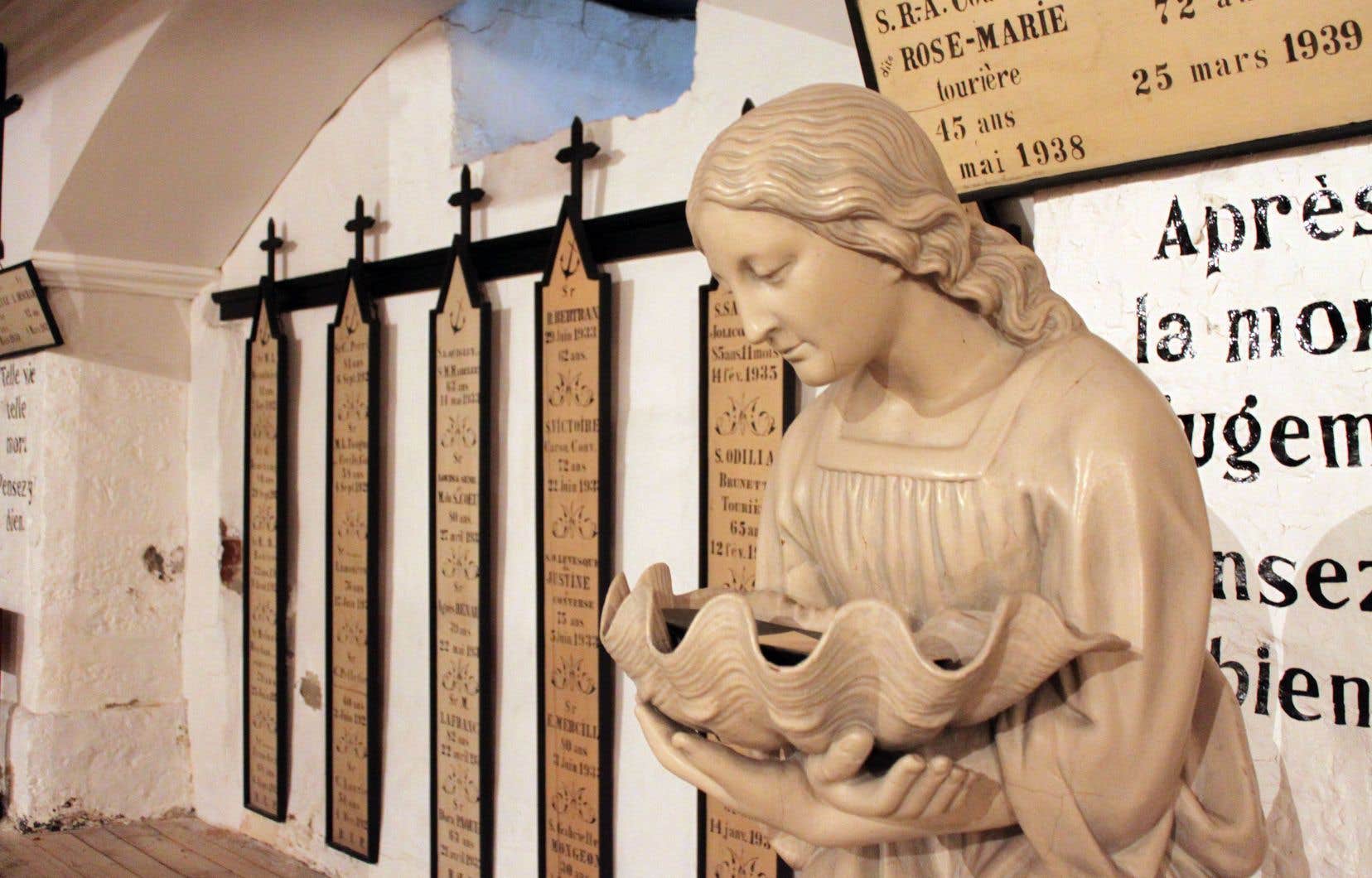This text is part of the special commemoration of Jeanne Mance
A work over several centuries that will lead to the founding of hospitals all over America.
Under the chapel of the Hospitallers of the former Hôtel-Dieu de Montréal, the foundation walls are nearly three meters thick. This is because inside lie the graves of 600 Sisters of the Religious Hospitallers of Saint Joseph (RHSJ). In this crypt, Jeanne Mance occupies a special place since she is the only secular woman. It is that the founder of the Hôtel-Dieu, although devout, will never be a nun. Rather, it was she who invited the nuns to Canada to assist her before bequeathing her property to them upon her death.
“The anchoring of Jeanne Mance and this congregation in the history of Montreal is fabulous,” says Paul Labonne, director of the Musée des Hospitalières de l’Hôtel-Dieu de Montréal. “First, because its Hôtel-Dieu was the first building outside the walls of Montreal, which was then called Ville-Marie, and the town was structured around it. But until the integration of the Hôtel-Dieu into the CHUM in 2017, this hospital was the only original institution to span almost four centuries of Montreal history. »
Ensure the continuation
Between Jeanne Mance and the RHSJ, the link is called Jérôme Le Royer de la Dauversière. This devotee, animated by the spirit of the Counter-Reformation, had on the one hand financed and organized the Société Notre-Dame de Montréal with a view to supporting the opening of a Montreal colony. On the other hand, he maintained his own Catholic works in France, including a new religious order, the Filles Hospitalières de Saint-Joseph, which he had helped to create in 1636.
However, Sister Marie de la Ferre, first superior of this congregation still not cloistered at the time, proved to be very competent. Having entirely refounded the Hôtel-Dieu in La Flèche, in the Pays de la Loire region of France, she is inundated with requests to resume work elsewhere, which the congregation will do in Baugé and Laval, in the same region. , and in Moulins, in Auvergne.
In 1658, Jeanne Mance, concerned about her health and the need to ensure the continuity of her work, therefore traveled to France to bring back three Hospitallers who would provide management and care. One of the three, Sister Judith Moreau de Brésoles, apothecary, will be the first superior of the community of Ville-Marie. Soon, she recruited the first Canadian, Marie Morin — who would become the congregation’s first Canadian superior in 1693.
The death of Jérôme Le Royer de la Dauversière, in 1659, led to significant financial difficulties, and Jeanne had to navigate through several major administrative transformations. The Sulpicians take control of the Société Notre-Dame de Montréal. But the contract guarantees Jeanne her autonomy, says Paul Labonne.
When Jeanne Mance died on June 18, 1673, the Sulpicians, who had been lords of the island for 10 years, took control of the hospital. “But it was expensive and they returned it to the Congregation of the Sisters in 1676,” explains Paul Labonne. The sisters will administer the institution until the retirement of Sister Trottier, in 1973, the last religious director of the Hôtel-Dieu de Montréal.
An unshakeable base in Montreal
Two other lay people rest in the crypt of the Hospitallers: the brothers Benoît and Gabriel Basset, who bequeathed a vast estate to the congregation in 1730.
These lands, which stretched from Sherbrooke Street to Jean-Talon, are still referred to by the nuns as “la Providence”. And as for the mound of the current Parc Jeanne-Mance, the sisters designated it as “Mont Sainte-Famille”. Over the generations, this property will have been subdivided gradually, but the toponymy bears witness to the history of its former owners, starting, of course, with Jeanne-Mance, Sainte-Famille, de Bullion and Basset streets, as well as Boulevard Saint-Joseph.
After three destructive fires, the congregation relocated the new Hôtel-Dieu in 1861 to a rapidly developing suburb on the current site of Avenue des Pins. Dedicated to providing the best care and often exposed to epidemics, which decimated their ranks, the sisters created their own school of “nurses” in 1901: the School of Nursing at the Hôtel-Dieu de Montréal.
In all, the congregation will found more than 80 hospitals, dispensaries and other clinics in France, Canada, the United States, Belgium, Peru, Mexico and Benin. A rarity in the history of Quebec-France relations, the base of Montreal is so strong that the general house, which administers the whole, will move from France to Montreal in the post-war period.
Paul Labonne cultivates the project of an exhibition on the history of the hôtel-Dieu from the Middle Ages to New France to show how Jeanne Mance’s project is part of a continuity. “To ensure the salvation of their souls, the nobles erected convents or hospitals. The monastery-chapel-hospital complex is everywhere. While the Hôtel-Dieu de Québec had been created by a religious community, the founding of that of Montréal by a laywoman was part of an equally ancient tradition. »
This special content was produced by the Special Publications team of the Duty, pertaining to marketing. The drafting of Duty did not take part.
